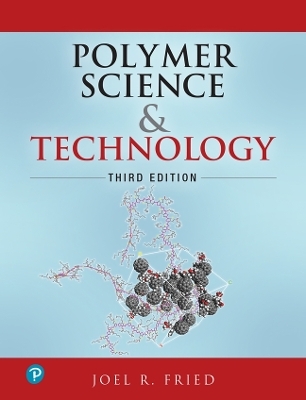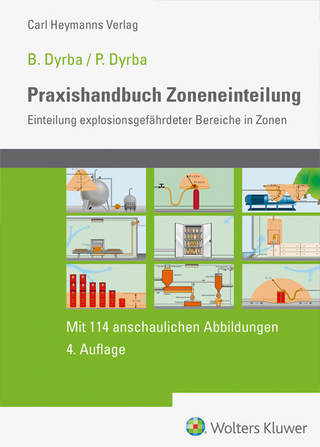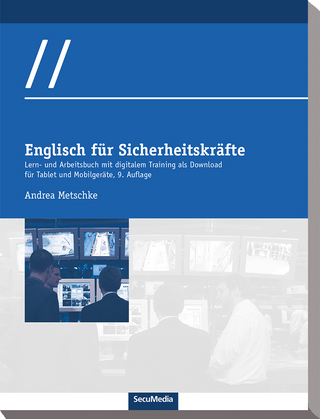
Polymer Science and Technology
Pearson (Verlag)
978-0-13-703955-5 (ISBN)
Now fully revised, Polymer Science and Technology, Third Edition, systematically reviews the field’s current state and emerging advances. Leading polymer specialist Joel R. Fried offers modern coverage of both processing principles and applications in multiple industries, including medicine, biotechnology, chemicals, and electronics.
This edition’s new and expanded coverage ranges from advanced synthesis to the latest drug delivery applications. New topics include controlled radical polymerization, click chemistry, green chemistry, block copolymers, nanofillers, electrospinning, and more.
A brand-new chapter offers extensive guidance for predicting polymer properties, including additional coverage of group correlations, and new discussions of the use of topological indices and neural networks. This is also the first introductory polymer text to fully explain computational polymer science, including molecular dynamics and Monte Carlo methods. Simulation concepts are supported with many application examples, ranging from prediction of PVT values to permeability and free volume.
Fried thoroughly covers synthetic polymer chemistry; polymer properties in solution and in melt, rubber, and solid states; and all important categories of plastics. This revised edition also adds many new calculations, end-of-chapter problems, and references.
In-depth coverage includes
Polymer synthesis: step- and chain-growth; bulk, solution, suspension, emulsion, solid-state, and plasma; ionic liquids, and macromers; and genetic engineering
Amorphous and crystalline states, transitions, mechanical properties, and solid-state characterization
Polymers and the environment: degradation, stability, and more
Additives, blends, block copolymers, and composites–including interpenetrating networks, nanocomposites, buckyballs, carbon nanotubes, graphene, and POSS
Biopolymers, natural polymers, fibers, thermoplastics, elastomers, and thermosets
Engineering and specialty polymers, from polycarbonates to ionic polymers and high-performance fibers
Polymer rheology, processing, and modeling
Correlations and simulations: group contribution, topological indices, artificial neural networks, molecular dynamics, and Monte Carlo simulations
Dr. Joel R. Fried is professor and chair of the department of chemical and biomedical engineering at Florida State University. Previously, he was professor and the Wright Brothers Endowed Chair in Nanomaterials at the University of Dayton. He is also professor emeritus of chemical engineering and fellow of the graduate school at the University of Cincinnati, where he directed the Polymer Research Center and led the department of chemical engineering. He holds B.S. degrees in biology and chemical engineering, and an M.E. degree in chemical engineering from Rensselaer Polytechnic Institute. He also holds M.S. and Ph.D. degrees in polymer science and engineering from the University of Massachusetts, Amherst.
Chapter 1: Introduction to Polymer Science
Chapter 2: Polymer Synthesis
Chapter 3: Conformation, Solutions, and Molecular Weight
Chapter 4: Solid-State Properties
Chapter 5: Viscoelasticity and Rubber Elasticity
Chapter 6: Polymer Degradation and the Environment
Chapter 7: Additives, Blends, Block Copolymers, and Composites
Chapter 8: Biopolymers, Natural Polymers, and Fibers
Chapter 9: Thermoplastics, Elastomers, and Thermosets
Chapter 10: Engineering and Specialty Polymers
Chapter 11: Polymer Processing and Rheology
Chapter 12: Polymers for Advanced Technologies
Chapter 13: Correlations and Simulations in Polymer Science
Appendix A: Polymer Abbreviations
Appendix B Representative Properties of Some Important Commercial Polymers
Appendix C ASTM Standards for Plastics and Rubber
Appendix D SI Units and Physical Constants
Appendix E Mathematical Relationships
Appendix F The Major Elements
| Erscheint lt. Verlag | 17.7.2014 |
|---|---|
| Sprache | englisch |
| Maße | 180 x 240 mm |
| Gewicht | 1204 g |
| Themenwelt | Technik |
| ISBN-10 | 0-13-703955-7 / 0137039557 |
| ISBN-13 | 978-0-13-703955-5 / 9780137039555 |
| Zustand | Neuware |
| Informationen gemäß Produktsicherheitsverordnung (GPSR) | |
| Haben Sie eine Frage zum Produkt? |
aus dem Bereich


